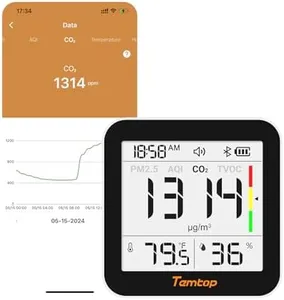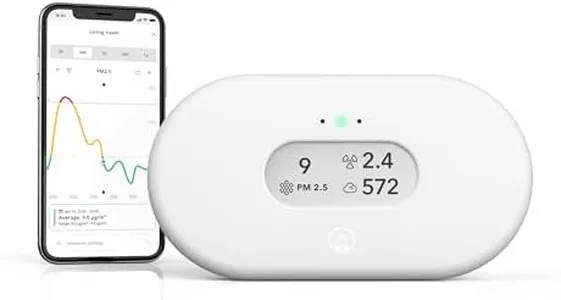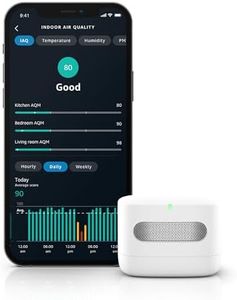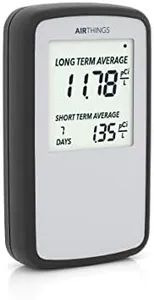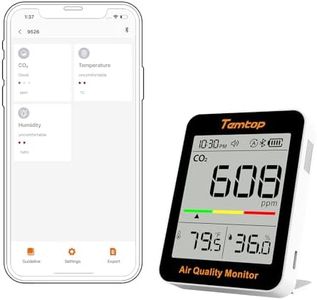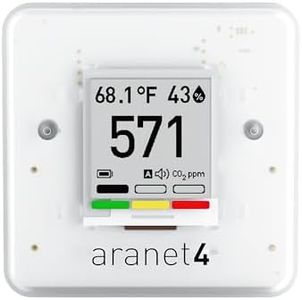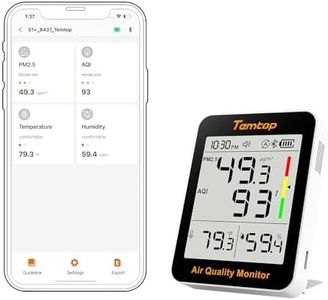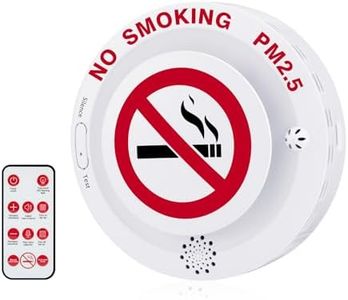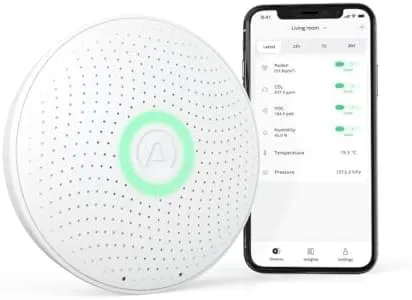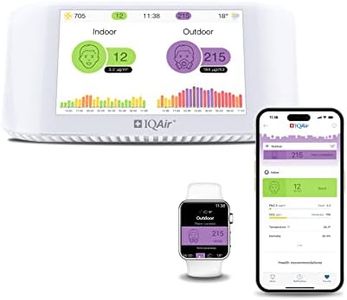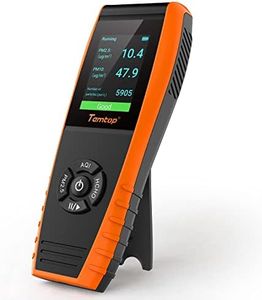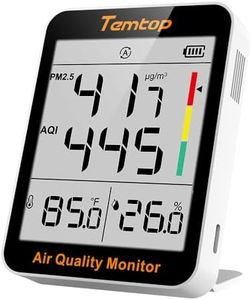10 Best Air Quality Meters 2025 in the United States
Our technology thoroughly searches through the online shopping world, reviewing hundreds of sites. We then process and analyze this information, updating in real-time to bring you the latest top-rated products. This way, you always get the best and most current options available.

Our Top Picks
Winner
Airthings 2960 View Plus - Battery Powered Radon & Air Quality Monitor (PM, CO2, VOC, Humidity, Temp, Pressure)
Most important from
1510 reviews
The Airthings 2960 View Plus is a comprehensive air quality monitor that measures a wide range of pollutants, including radon, PM2.5, CO2, VOCs, humidity, temperature, and air pressure. The device is WiFi-connected and requires the Airthings app for full functionality, allowing users to access live data and receive notifications about air quality.
Its always-on sensors provide continuous monitoring, which is beneficial for those wanting to keep a close eye on their indoor air environment. The device promises high accuracy in detecting radon, a significant concern as it is a leading cause of lung cancer among non-smokers.
The monitor is battery-powered (with an average battery life of two years) and offers a cable-free setup, enhancing its portability and ease of placement in various locations. It features a customizable eInk display and is compatible with devices like Alexa and the Airthings Hub, which adds to its versatility. Additionally, the product includes a five-year warranty (upon registration).
Most important from
1510 reviews
Amazon Smart Air Quality Monitor – Know your air, Works with Alexa
Most important from
4939 reviews
The Amazon Smart Air Quality Monitor is a helpful device for those wanting to keep track of indoor air quality. It measures five key pollutants: particulate matter (PM 2.5), volatile organic compounds (VOCs), carbon monoxide (CO), as well as monitoring humidity and temperature. This variety helps ensure a comprehensive overview of your air quality. The device is relatively accurate, although it has a margin of error that varies depending on the pollutant being measured. For example, temperature and humidity measurements are quite precise, but CO and PM 2.5 have higher error margins.
The color-coded LED provides a quick visual indication of air quality, and more detailed information can be found in the Alexa app, which is user-friendly and easy to navigate. The device can also send notifications and even trigger Alexa routines to activate other smart home devices if the air quality drops, adding an extra layer of automation and convenience. One downside is that it requires a continuous power source, as it operates via a micro-USB cable connected to a power adapter. It is also designed for indoor use only and has a limited range for temperature and humidity. On the plus side, it's compact and lightweight, making it easy to place anywhere in your home.
Compatibility with all Echo devices and the Alexa app ensures seamless integration into your existing smart home setup. The Amazon Smart Air Quality Monitor is a great choice for non-experts looking for a straightforward way to monitor and manage their indoor air quality, with the added benefit of Alexa integration.
Most important from
4939 reviews
Airthings Corentium Home Radon Detector 223 Portable, Lightweight, Easy-to-Use, (3) AAA Battery Operated, USA Version, pCi/L
Most important from
10348 reviews
The Airthings Corentium Home Radon Detector 223 is a compact and portable device designed specifically for monitoring radon levels in homes. One of its key strengths is its battery-operated feature, allowing for easy placement anywhere without needing an outlet, which adds to its portability. It consistently measures radon concentrations, giving you both long-term and short-term readings on the display, which is user-friendly and easy to read. This is particularly beneficial for homeowners concerned about radon exposure, as it helps in tracking fluctuations over time.
The device generates a radon self-inspection report, making it simple to document levels and take necessary action if readings are high. Additionally, with a light weight of only 0.22 pounds and dimensions of 1 x 2.7 x 4.7 inches, it is very easy to handle and store.
There are some drawbacks to consider. While it provides immediate feedback on radon levels, the accuracy and response time may not match those of more advanced, wired radon detectors. It also only measures radon and does not monitor other pollutants, potentially limiting its usefulness if you're interested in a broader air quality assessment. Furthermore, some users might prefer a more feature-rich interface, as the display offers basic information.
Most important from
10348 reviews
Buying Guide for the Best Air Quality Meters
Choosing the right air quality meter is essential for ensuring that the air you breathe is safe and healthy. Air quality meters can help you monitor various pollutants and environmental factors in your home, office, or any other indoor space. To make an informed decision, it's important to understand the key specifications and features of these devices. This guide will help you navigate through the important specs and choose the best air quality meter for your needs.FAQ
Most Popular Categories Right Now
